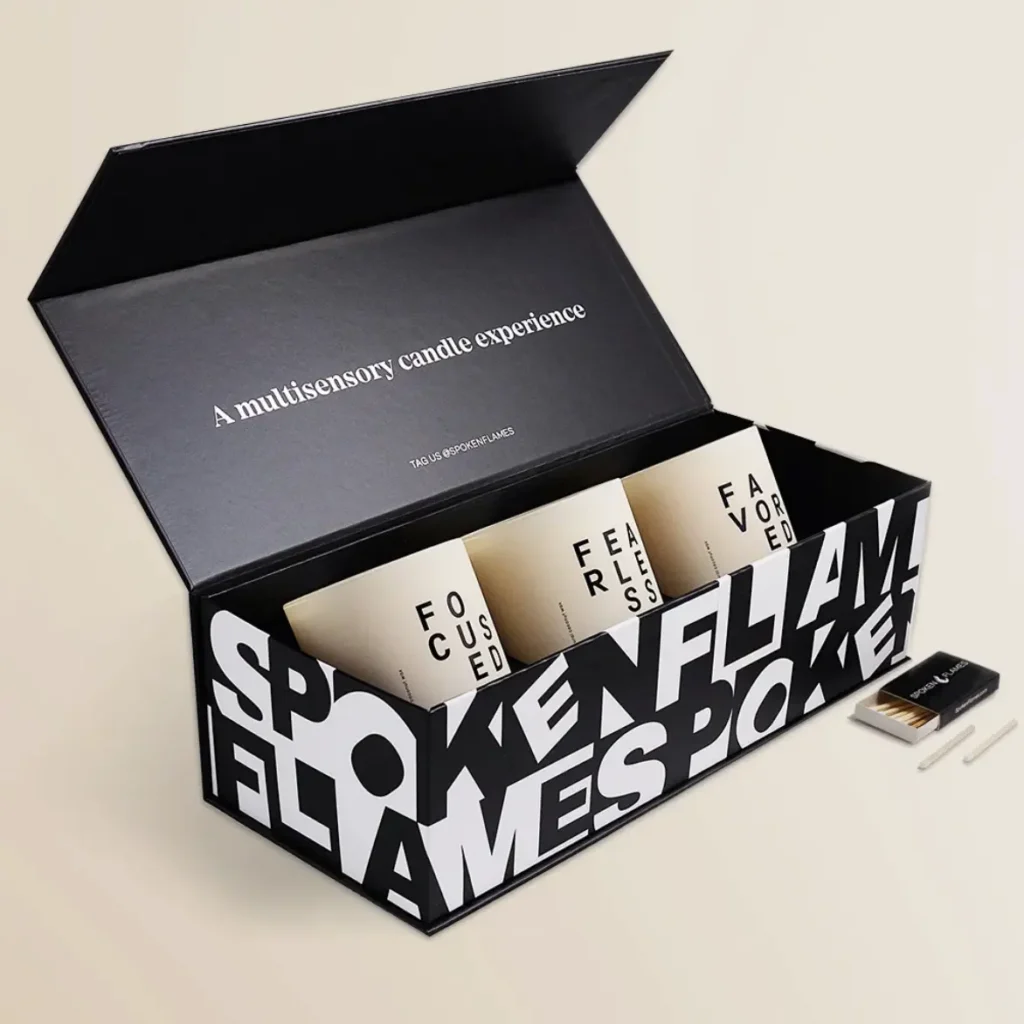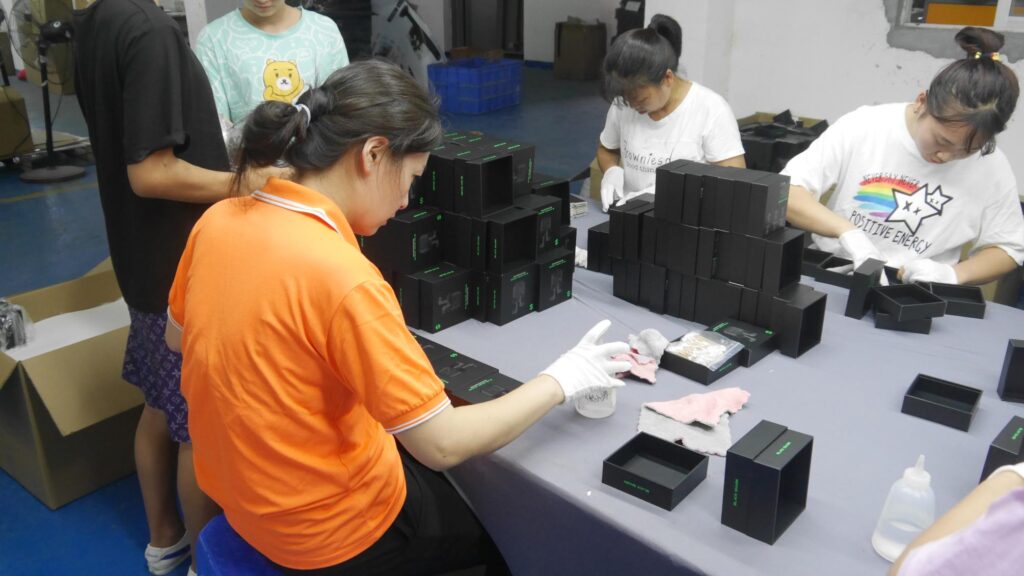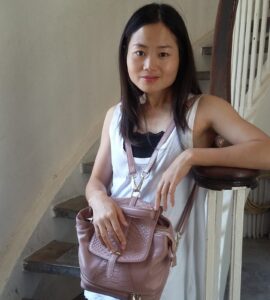Low Cost, High Flexibility, Unlocking Premium Branding – Your Small-Batch Rigid Packaging Solution
Looking for small-batch custom rigid packaging boxes? This guide breaks down materials, processes, and costs for rigid boxes—tailored for startups, e-commerce businesses, and limited-edition products.
1. What Are Rigid Packaging Boxes? Why Are They Key to Brand Elevation?
Rigid boxes—also known as set-up boxes or luxury gift boxes—are made from thick, durable paperboard that offers exceptional structural integrity and a premium tactile feel. Unlike folding cartons, rigid boxes do not collapse, giving them a sturdy, high-end appearance.
They’re widely used in luxury goods, cosmetics, jewelry, electronics, and gift packaging, where first impressions and unboxing experiences matter most. A well-designed rigid box communicates quality, trust, and craftsmanship—key elements for building brand credibility and emotional connection with customers.
For startups and emerging brands, rigid packaging provides an opportunity to elevate perceived product value without drastically increasing production costs.

2. Core Advantages of Small-Batch Customization: Why Emerging Brands Should Prioritize It
Small-batch customization is a game-changer for growing businesses that need flexibility, creative control, and cost efficiency.
Key Benefits:
- Lower Financial Risk: You can test new packaging designs or limited product lines without committing to large inventory.
- Faster Market Response: Quickly adapt to consumer feedback, seasonal trends, or promotional campaigns.
- Brand Differentiation: Experiment with designs, textures, and finishes that set your products apart from competitors.
- Sustainable Inventory Management: Reduce storage costs and material waste by producing only what you need.
Case Study Example:
A skincare startup ordered 500 small-batch rigid folding boxes with a minimalist foil-stamped design. This approach allowed them to launch quickly, test market response, and later scale up with an optimized design once sales increased—saving over 20% on future production costs.

3. The Small-Batch Customization Process
Working with a professional rigid box manufacturer ensures smooth coordination and premium results. The typical process includes:
- Consultation & Design – Discuss size, style, artwork, and material options.
- Material Selection – Choose paper type (art paper, textured paper, kraft, or specialty finishes).
- Prototype & Sampling – Receive a physical sample to test design, structure, and quality.
- Production – Once approved, small-batch production begins with strict quality control.
- Packaging & Delivery – Boxes are carefully packed for safe global shipment.
Many manufacturers, including ours, offer free design guidance and sample production to help clients make confident decisions before bulk production.
4. Cost Analysis
Small-batch rigid box pricing depends on several key factors:
| Cost Component | Description | Optimization Tip |
|---|---|---|
| Material Cost | Thicker paperboard and premium wrap paper( laminated paper, or textured paper)increase price. | Choose standard or in-stock materials to reduce custom material costs |
| Printing | Coated paper printing enables rich color customization and precise brand detailing. However, for smaller custom runs, setup costs can raise the unit price. | Limit colors or combine print layouts for test runs to save cost. |
| Cutting Die | Complex box structure require more complex tooling, which directly increases cutting die costs. | Simplify your box structure or using your supplier’s existing die design helps significantly lower tooling costs. |
| Post-Processing | Embossing, debossing, stop UV, or metallic foil add luxury appeal. | Combine 1–2 premium finishes for impact without overspending. |
| Labor & Assembly | Assembly labor represents the most significant cost factor, as workers manually glue small die-cut sheets together—an essential yet labor-intensive stage in production. | Opt for a simple box structure (such as a top-and-bottom lid box) can significantly reduce production costs. |
| MOQ Impact | Higher quantities reduce per-unit pricing. | Plan volume strategically to get better cost efficiency. |
5. How to Choose a Reliable Supplier
Choosing the right manufacturer can make or break your packaging success. Here’s what to look for:
- Experience & Expertise: Look for factories with 10+ years of experience in rigid box production.
- Full Customization Capability: Verify they offer printing, coating, and assembly in-house.
- Low MOQ Support: Ensure they accommodate small-batch runs without high setup fees.
- Quality Assurance: Request samples and check surface finishes, color accuracy, and box durability.
- Responsive Communication: A good supplier offers professional guidance through every step.
As a manufacturer with over 20 years of experience, we’ve partnered with 2,000+ global brands to create premium rigid packaging. Our small-batch service helps startups achieve high-end presentation at manageable costs.

6. Frequently Asked Questions (FAQ)
Q1: Can complex finishes be applied to small-batch orders?
Absolutely. Premium finishes such as foil stamping, spot UV, embossing, and soft-touch lamination can be applied even to small batches, and without dramatically increasing overall costs. These techniques enhance brand perception and create a luxurious unboxing experience.
Q2: What is the typical production timeline?
Production generally takes 10–15 days from design confirmation to sample completion. Once samples are approved, full production and delivery usually require an additional 20–30 days, depending on customization complexity.
Q3: Do you offer free design support?
Yes. Professional manufacturers provide comprehensive structural design assistance, including layout optimization, material recommendations, and process guidance to enhance both aesthetics and cost efficiency.
Please note: logo creation and graphic design are typically not included.
Q4: How long does shipping take?
For small-batch orders, air freight is often the most time- and cost-efficient option, with delivery typically taking 7–10 business days.
Cost-saving tip: We maintain long-term partnerships with trusted international logistics providers, allowing us to offer discounted global air freight rates for clients worldwide.
Conclusion: Small-Batch Rigid Boxes—The Lever for Brand Growth
Rigid packaging boxes transcend mere product enclosures; they become conduits for conveying brand value. Through small-batch customization, you can cultivate a premium image with minimal risk and conquer market competition.
Contact us today to request your free design consultation and sample kit!





